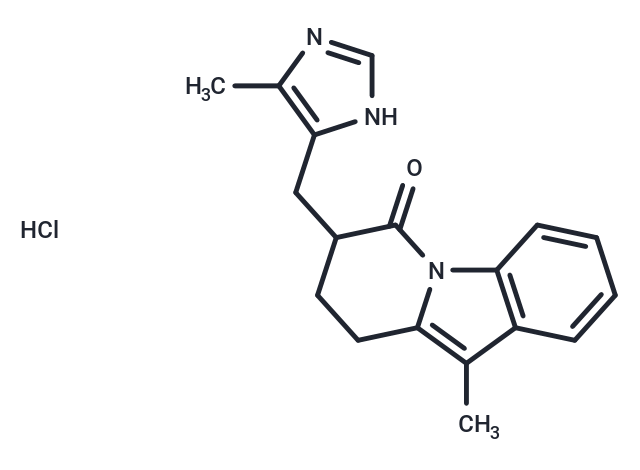Shopping Cart
- Remove All
 Your shopping cart is currently empty
Your shopping cart is currently empty

FK1052 hydrochloride is a potent 5-HT3 and 5-HT4 receptor dual antagonist.

| Pack Size | Price | Availability | Quantity |
|---|---|---|---|
| 25 mg | $1,970 | 8-10 weeks | |
| 50 mg | $2,580 | 8-10 weeks | |
| 100 mg | $3,400 | 8-10 weeks |
| Description | FK1052 hydrochloride is a potent 5-HT3 and 5-HT4 receptor dual antagonist. |
| In vivo | FK1052 (1 mg/kg i.v. ×4) apparently reduces delayed emesis caused by Methotrexate (MTX) and increases, but not significantly, the time for onset of emesis.?Furthermore, increasing the dose to 3.2 mg/kg of FK1052 also significantly inhibits the number of the emetic episodes induced by MTX, of which the action is more effective than the treatment with FK1052 at 1 mg/kg.In conscious rats, both 5-HT and 5-methoxytryptamine significantly increase fecal pellet output and accelerate colonic transit.?In contrast, the effect of 2-methyl-5-HT is slight.?Although Ondansetron and Granisetron slightly reduce 5-HT (1 mg/kg s.c.) stimulated colonic transit, FK1052, at 0.1 mg/kg p.o., inhibits completely the increases in the colonic transit.?Furthermore, FK1052, Ondansetron and Granisetron significantly depress the increase in fecal pellet output caused by wrap-restraint stress, with ED50 values of 0.21, 3.0 and 1.1 mg/kg p.o., respectively.?Intraperitoneal administration of 5-HT and 5-methoxytryptamine, but not 2-methyl-5-HT, produces a dose-related increase in the incidence of diarrhea in fasted mice.?5-HT (0.32 mg/kg i.p.)-induced diarrhea is also inhibited by FK1052, Ondansetron and Granisetron, with ED50 values of 0.09, 2.3 and 0.88 mg/kg p.o., respectively. |
| Alias | FK1052 hydrochloride |
| Molecular Weight | 329.82 |
| Formula | C18H20ClN3O |
| Cas No. | 129299-81-6 |
| Relative Density. | no data available |
| Storage | Powder: -20°C for 3 years | In solvent: -80°C for 1 year | Shipping with blue ice. |

Copyright © 2015-2025 TargetMol Chemicals Inc. All Rights Reserved.